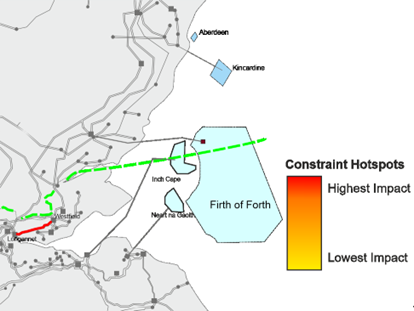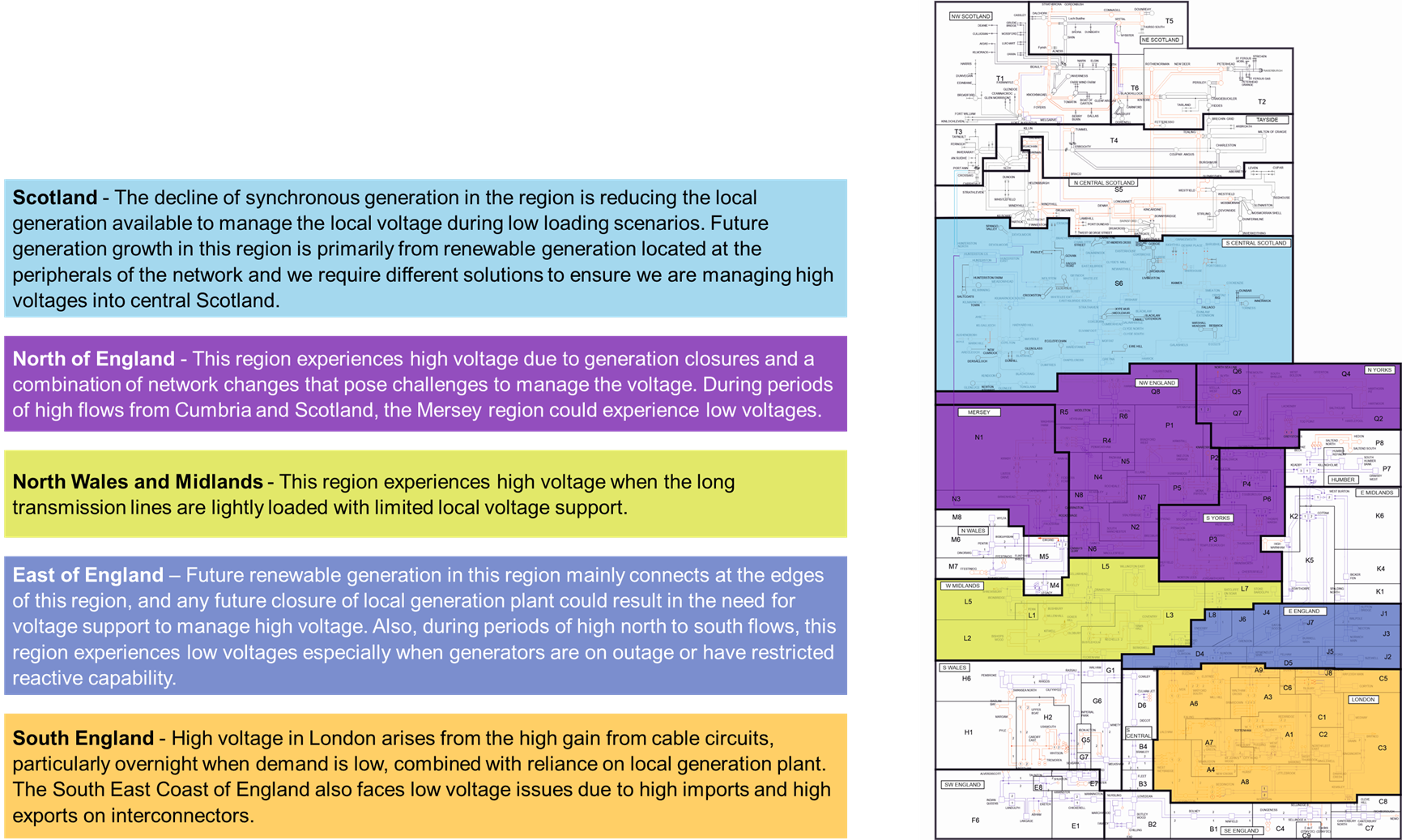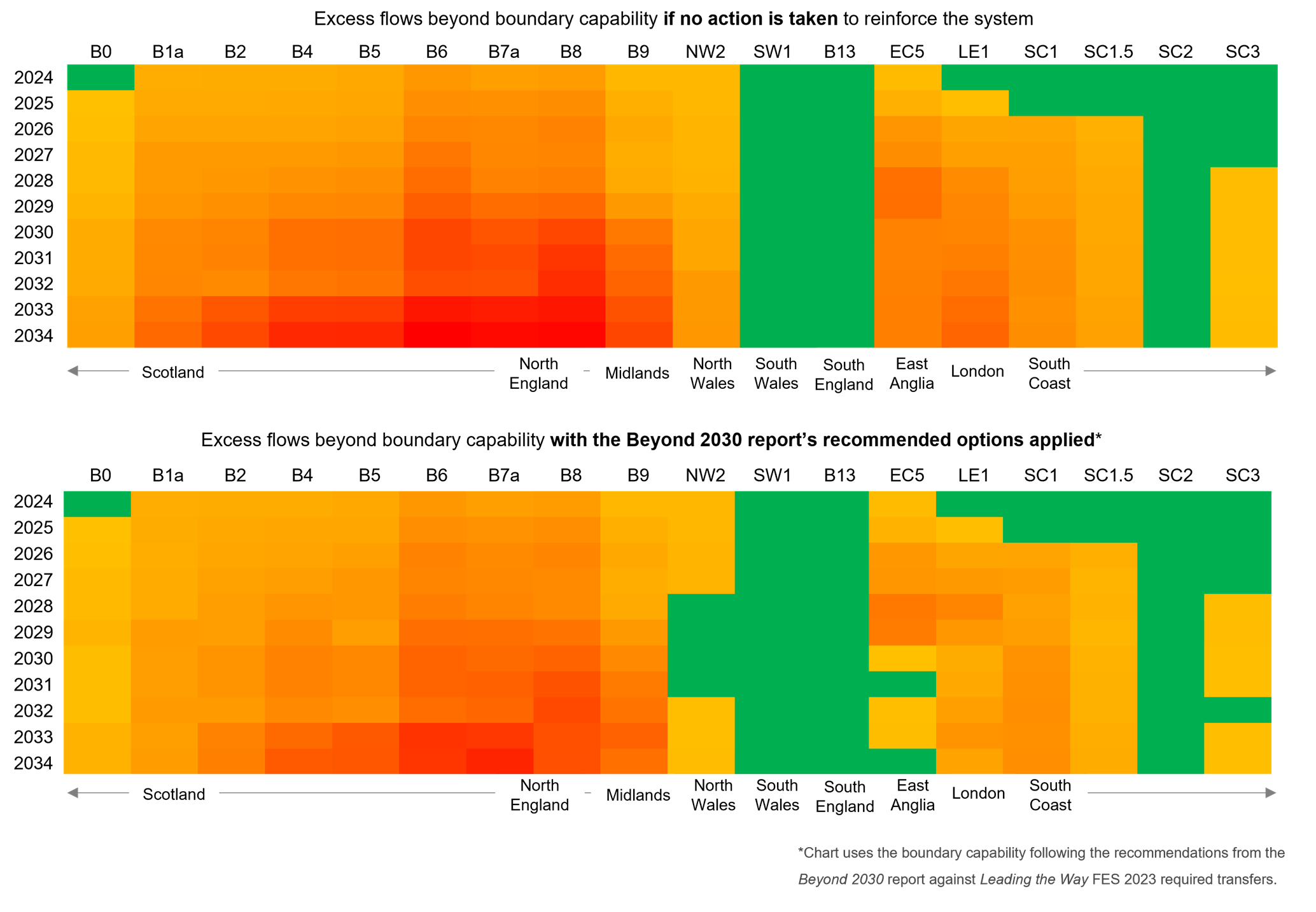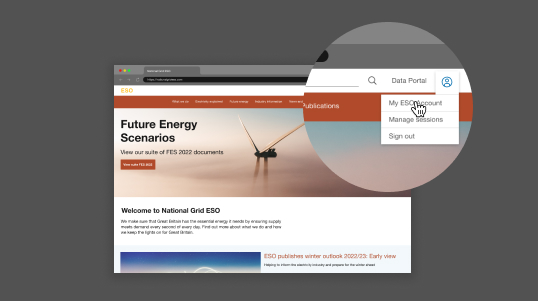The Electricity Ten Year Statement (ETYS) is the ESO’s view of future transmission requirements and the capability of Great Britain’s National Electricity Transmission System (NETS) over the next ten years.
The ETYS is important in helping us to understand where investment and development is needed to help us achieve our zero-carbon ambition. Our key messages explain the key system need insights from our analysis of the latest Future Energy Scenarios.
About the ETYS
The ETYS sits at the heart of our network planning process. Using the data from our Future Energy Scenarios (FES), we identify points on the transmission network where more transfer capacity is needed through reinforcing the network to continue delivering electricity reliably. Once we have assessed the network requirements, we invite stakeholders to propose solutions to these requirements.
These proposals were traditionally assessed through our Network Options Assessment (NOA) process, where the most economic and efficient solution is given a recommendation to proceed, and others are put on hold or stopped.
We’re currently transitioning from the NOA to a new Centralised Strategic Network Plan (CSNP). The CSNP should ensure holistic development of the NETS.
What’s new in ETYS 2023?
The way we communicate our electricity transmission network requirements is changing as we expand our view of system needs across a year. Building on examples from ETYS 2022, we will include a summary of year-round system needs for selected boundaries across the National Electricity Transmission System (NETS).
We have also incorporated our annual voltage screening report into this year’s publication, with the intention of showing our stakeholders a clearer picture of all transmission requirements over the next ten years in one place.
Key messages
Our analysis this year continues to show growing system needs driven primarily by low carbon and renewable generation. This will drive requirements for new network capability as we continue to move towards the 2035 government target of 100% zero carbon electricity system and beyond. Much of this network capability will be delivered through new infrastructure, both onshore and offshore, and hence we fully support the recommendations in the Transmission Commissioners report which will enable a more timely and streamlined delivery of this new infrastructure.
As generation, demand and the network evolves, our expanded tool capabilities mean that we are now well placed to identify any additional needs arising in other seasons of the year.
We are working with more data than ever before to analyse system needs across the different seasons in a year.
This year we have continued to develop our end-to-end process to analyse year-round thermal needs across the transmission network. The results shown in our year-round system needs chapter are part of a new enduring processes to assist us in identifying and managing thermal system needs across an entire year, rather than just at winter peak.
Our year-round analysis identifies components on the network which become overloaded, causing limitations to power flow. As part of our analysis so far, we are able to identify overloaded assets across winter, spring, summer, and autumn, with winter currently experiencing the most severe overloads.
The tool capabilities we have developed to date mean that as the future generation, demand and network evolve, we now have the capabilities to identify any limitations that might arise in other seasons, a major improvement from single winter peak snapshot analysis. We expect this expanded view of needs across seasons to further allow us identify and communicate additional system needs for our interested stakeholders to identify new solutions that are perhaps not captured through traditional winter peak analysis.

Voltage is a local issue driven by the changes in local generation, demand, and the evolving network. High voltage issues primarily arise in low load conditions while low voltage issues arise in high flow conditions. This year, we have integrated the results of our annual voltage screening process into ETYS. We have identified regions that could have emerging voltage needs over the next decade and we will continue to explore options to address these needs.
Scotland – The decline of synchronous generation in the region is reducing the local generation available to manage the local voltage during low loading scenarios. Future generation growth in this region is primarily from renewable generation located at the peripherals of the network, and we require different solutions to ensure we are managing high voltages into central Scotland.
North of England – This region experiences high voltage due to generation closures and a combination of network changes that pose challenges to manage the voltage. During periods of high flows from Cumbria and Scotland, the Mersey region could experience low voltages.
North Wales and Midlands – This region experiences high voltage when the long transmission lines are lightly loaded with limited local voltage support.
East of England – Future renewable generation in this region mainly connects at the edges of this region, and any future closure of local generation plants could result in the need for voltage support to manage high voltage. Also, during periods of high north to south flows, this region experiences low voltages especially when generators are on outage or have restricted reactive capability.
South England – High voltage in London arises from the high gain from cable circuits, particularly overnight when the demand is low, combined with reliance on local generation plants. The south east coast of England faces low voltage issues due to high imports and high exports on interconnectors.

The ETYS describes the network capability by looking at the maximum secured power transfer between two regions or the power transfer across a boundary. To operate the network safely, we must make sure that the power flow across the boundary does not exceed the capability of the system between the two regions. To prevent this, we must take actions to constrain generation which can incur significant costs.
The two heatmaps below illustrate the impact of the network reinforcement options recommended in the Beyond 2030 report on the "leading the way" FES 2023 scenario, showing how these options can significantly reduce constraints by increasing the power transfers across boundaries.
The ESO are proactively developing non-build solutions to network constraints, and the Constraints Management Intertrip Service (CMIS) is being developed for the EC5 boundary following success of the B6 service.
As the ESO transition into the Future System Operator and our network design evolves, we will take a whole-system approach to developing the network.


ETYS 2023
The Electricity Ten Year Statement outlines our view of the National Electricity Transmission System over the next ten to twenty years.
Contribute to our year-round analysis of ETYS
We would like to hear your views on how we can improve the ETYS, and we have set up a short survey to gather feedback.





